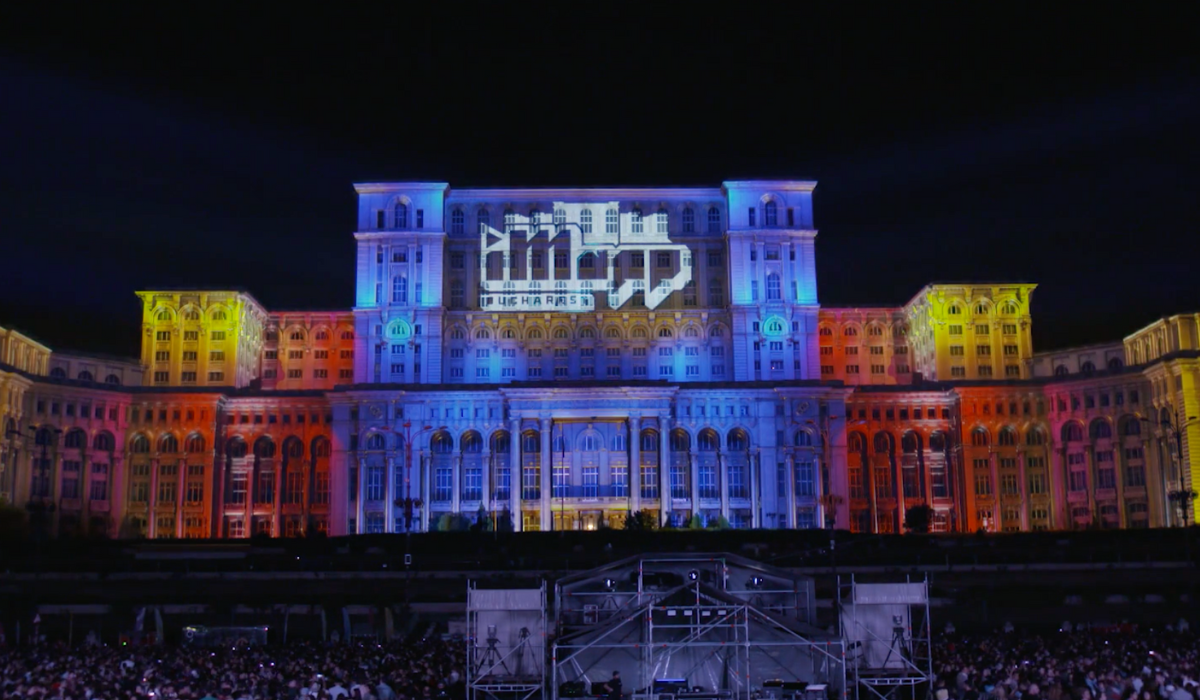In the digital and technological era, projection mapping and LED walls are two similar technologies used as mediums to display 3D content and create visually outstanding shows. Their main objective is to create immersive experiences that “wow” the audience to make emotional connections. For this reason, these two technologies are highly used during experiential branding events, especially for their capacity to leave a lasting impression on the audience that makes the brands resonate for a while. However, when deciding what technology is best for your next event branding event, it is essential to understand their main differences to achieve your goals within your marketing budget. In this post, we’ll analyze the differences between these two immersive installations to help you make a well-informed decision for your next brand event.
Technology and Display Mechanism:
Projection Mapping employs projectors to cast images, videos, and animations onto surfaces, transforming them into dynamic canvases. This technology is perfect for creating immersive, three-dimensional visual experiences on irregular or non-standard surfaces. On the other hand, LED Walls consist of an array of individual LED panels that emit light to create a seamless display. They provide high-resolution, bright, and vibrant visuals suitable for indoor and outdoor settings.
Cost Considerations
Budget allocation is often a primary concern for any branding event. Projection Mapping offers an option for creating dynamic, larger-than-life visual experiences. With fewer physical components and a reliance on projectors, it typically requires a lower upfront investment. Additionally, the flexibility of Projection Mapping allows for adaptability in venue selection, potentially eliminating the need for additional staging or infrastructure. However, the scale and complexity of the project could rapidly increase the cost of a projection mapping project.
On the other hand, LED Walls, while providing remarkable brightness and clarity, may entail higher initial costs due to individual panel expenses. However, they offer long-term value with their durability and lower maintenance requirements. LED Walls are designed to withstand the elements, making them an excellent choice for outdoor events that require a reliable and robust display solution.
![[Tags] What are the differences between Projection Mapping and LED Walls in Experiential Branding Events?](https://www.go2productions.com/wp-content/uploads/Go2-Productions-LED-Wall-Genie-Gala.png) Go2 Productions – Genie Gala Party using LED walls to create an immersive show
Go2 Productions – Genie Gala Party using LED walls to create an immersive show
Visibility: Day vs. Night
The visibility of your brand message is paramount, whether your event takes place in broad daylight or under the evening stars. Projection Mapping tends to excel in nighttime settings. With controlled lighting conditions, it can transform ordinary surfaces into immersive storytelling platforms, creating fascinating visual spectacles. However, it may face challenges in outdoor daytime events, where natural light can wash out the projections, potentially compromising the clarity and impact of the visuals. This limitation should be carefully considered when planning daytime events.
In contrast, LED Walls will shine brightly in any lighting condition. Their high luminosity ensures that your content remains vivid and captivating, even under direct sunlight, making them an excellent choice for events that span throughout the day and night.
Content Flexibility
Another crucial factor to consider is the level of content flexibility required for your event. Projection Mapping offers an unparalleled canvas for creative expression. Its dynamic nature allows for the seamless integration of 3D elements, animations, and interactive features. This makes it an excellent choice for events that demand a high degree of artistic and narrative customization.
LED Walls, while slightly more structured in terms of display format, provide an equally adaptable canvas. They offer precise control over content placement and resolution, making them an excellent choice for events with specific content requirements or those that require a consistent, branded message.
Occasion-Specific Recommendations
- Projection Mapping: This technology is a showstopper for events held primarily in controlled indoor environments or during nighttime gatherings. It’s perfect for product launches, gala dinners, art exhibitions, and theatrical performances. Projection Mapping allows for imaginative storytelling and dynamic visual effects that leave a lasting impression on your audience.
- LED Walls: If your event requires high-impact visuals that stand out, regardless of lighting conditions, LED Walls are the go-to choice. They’re ideal for outdoor festivals, trade shows, sporting events, and exhibitions. LED Walls create a bright, eye-catching canvas for your brand message and ensure your content remains captivating from dawn to dusk.
![[Tags] What are the differences between Projection Mapping and LED Walls in Experiential Branding Events?](https://www.go2productions.com/wp-content/uploads/Go2-Productions-Projection-Mapping-Genie-New-Orleands-Experiential-Branding-Product-Launch.gif) Go2 Productions – Genie Projection Mapping for product launching event.
Go2 Productions – Genie Projection Mapping for product launching event.
Conclusion
In conclusion, the decision between Projection Mapping and LED Walls ultimately boils down to your event’s specific needs, budget considerations, lighting conditions, and content requirements. Both technologies offer unique advantages and opportunities to create immersive experiences. Understanding their strengths will allow you to craft a distinctive branded experience that resonates deeply with your target audience. Whether you choose the dynamic storytelling of Projection Mapping or the versatile luminosity of LED Walls, your brand is bound to leave an indelible mark.
If you need a creative partner to help plan, execute, and produce experiential content for your LED walls, Projection Mapping or both, contact Go2 Productions. We’ll work alongside you in the creative process and production to bring your ideas to life.


